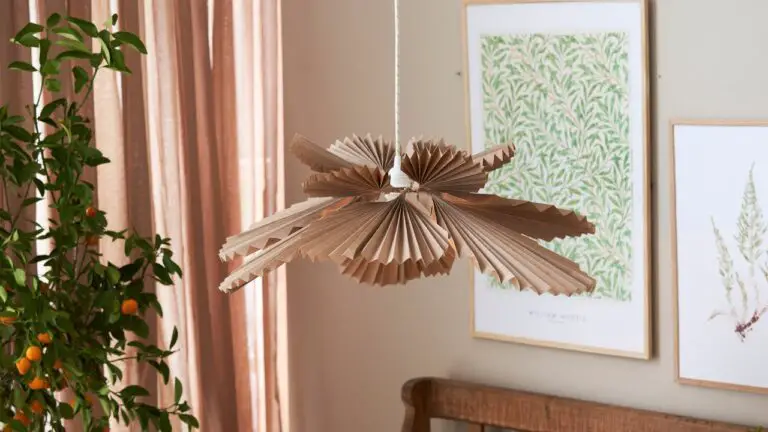When it comes to designing sustainable and eco-friendly products, natural fibers are a top choice for many designers. From clothing and accessories to home decor and furniture, natural fibers offer a versatile and stylish alternative to synthetic materials. In this article, we will explore the benefits of designing with natural fibers, the wide range of options available, and the positive impact it can have on the environment. Whether you’re a designer looking to incorporate more sustainable materials into your work or a consumer interested in making more eco-conscious choices, designing with natural fibers is a trend worth exploring.
- Natural fibers such as cotton, linen, and hemp are sustainable and eco-friendly materials that can be used in designing clothing, accessories, and home decor items.
- When designing with natural fibers, it is important to consider the durability, breathability, and comfort of the material to ensure the final product is of high quality and long-lasting.
How can natural fibres be utilized?
Natural fibres, such as wool, cotton, and silk, have been utilized for various purposes throughout history. These biopolymers, derived from animals and plants, are primarily made up of proteins and cellulose. Their versatility allows for their use in clothing, textiles, and even construction materials, making them an eco-friendly choice for many consumer products.
In addition to their diverse applications, natural fibres also offer sustainability benefits. Unlike synthetic fibres, which are derived from petrochemicals and can take hundreds of years to decompose, natural fibres are biodegradable and do not contribute to environmental pollution. By choosing products made from natural fibres, individuals can reduce their environmental impact and support sustainable practices in the fashion and construction industries.
Overall, the utilization of natural fibres presents an opportunity to promote environmentally conscious consumer choices. By incorporating these biopolymers into various products, individuals can contribute to the preservation of the planet and reduce their carbon footprint. From clothing to household items, the use of natural fibres offers a sustainable and eco-friendly alternative for a wide range of applications.
What does fiber mean in fashion design?
Fiber in fashion design refers to the material used to create clothing and textiles. Fibers can be natural, like cotton and wool, or synthetic, such as polyester and nylon. These materials are woven or knitted together to form the fabrics that designers use to bring their creations to life. Understanding the properties and characteristics of different fibers is crucial for fashion designers in order to create garments that are durable, comfortable, and visually appealing.
When it comes to fashion design, the choice of fiber can greatly impact the quality and performance of the final product. Natural fibers like cotton and silk are prized for their breathability and luxurious feel, while synthetic fibers like polyester and nylon are known for their durability and resistance to wrinkles. By carefully selecting the right fibers for their designs, fashion designers can ensure that their creations not only look stylish, but also feel great to wear and stand the test of time.
Why should you only wear natural fibers?
When it comes to choosing clothing, opting for natural fibers is not only a more sustainable choice but also a beneficial one for your own comfort. Natural fibers like cotton, wool, and silk are biodegradable, meaning they break down naturally over time, unlike synthetic materials which can take hundreds of years to decompose. This makes natural fiber clothing a more environmentally friendly option.
Furthermore, natural fibers are known for their breathability and softness, making them a popular choice for those with sensitive skin or allergies. Synthetic materials like polyester or nylon can trap heat and moisture against the skin, leading to discomfort and potential skin irritations. By choosing natural fiber clothing, you can ensure that your skin can breathe and stay comfortable throughout the day.
Overall, the benefits of wearing natural fibers extend beyond just personal comfort. By supporting the production and use of natural fiber clothing, you are also contributing to a more sustainable and environmentally friendly fashion industry. So next time you’re shopping for new clothes, consider choosing natural fibers for a more eco-conscious and skin-friendly wardrobe.
Eco-Friendly Elegance: Natural Fiber Design
Indulge in the luxurious beauty of eco-friendly elegance with our collection of natural fiber designs. Crafted with sustainability in mind, our pieces are made from high-quality materials such as organic cotton, bamboo, and linen. Not only do these fabrics offer a soft and comfortable feel, but they also contribute to a more sustainable future for our planet.
Embrace the beauty of nature with our stylish and environmentally-conscious designs. From cozy loungewear to elegant home decor, our natural fiber pieces are perfect for those who appreciate both style and sustainability. Elevate your wardrobe and living space with our eco-friendly collection, and make a statement that is as fashionable as it is environmentally responsible.
Fashion with a Conscience: Sustainable Style
When it comes to fashion with a conscience, sustainable style is key. By choosing clothing made from eco-friendly materials and produced ethically, you can make a positive impact on the environment and support fair labor practices. From organic cotton to recycled fabrics, there are plenty of sustainable options to choose from that are both stylish and environmentally friendly.
In addition to the materials used, the production process also plays a crucial role in sustainable fashion. Look for brands that prioritize transparency and ethical practices throughout their supply chain. By supporting these companies, you can help promote a more sustainable and socially responsible fashion industry. Remember, every purchase you make is a vote for the kind of world you want to live in.
Ultimately, fashion with a conscience is about making conscious choices that align with your values. By opting for sustainable style, you can look good and feel good knowing that your wardrobe is making a positive impact. So next time you’re shopping for clothes, consider the environmental and social implications of your purchase. Together, we can create a more sustainable and ethical fashion industry for a better future.
Earthy Chic: Embracing Natural Fiber Design
Embrace the beauty of natural fiber design with our Earthy Chic collection, where sustainability meets style. From organic cotton to bamboo and jute, each piece in this curated selection exudes a sense of eco-conscious elegance. Elevate your space with earthy tones and textures that not only look good but also feel good, knowing that you are making a positive impact on the environment. Bring a touch of nature indoors and let your home reflect your commitment to conscious living with our Earthy Chic collection.
Sustainable Sophistication: Natural Fiber Fashion Choices
Elevate your style with sustainable sophistication by choosing natural fiber fashion. Embrace the luxurious feel of organic cotton, bamboo, hemp, and linen while making environmentally conscious choices. From breathable summer dresses to cozy winter sweaters, natural fiber clothing not only looks and feels great but also minimizes the impact on the planet. Make a statement with your fashion choices by opting for eco-friendly materials that exude timeless elegance and respect for the environment.
Incorporating natural fibers into design projects not only enhances the aesthetic appeal but also promotes sustainability and environmental consciousness. By utilizing materials such as cotton, hemp, and jute, designers can create unique and eco-friendly products that resonate with consumers seeking more sustainable options. From clothing and accessories to home decor and furniture, the possibilities for designing with natural fibers are endless. Embracing these materials not only adds a touch of nature to our surroundings but also contributes to a greener and more sustainable future.


